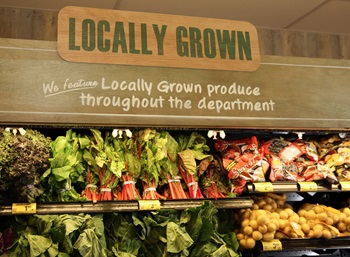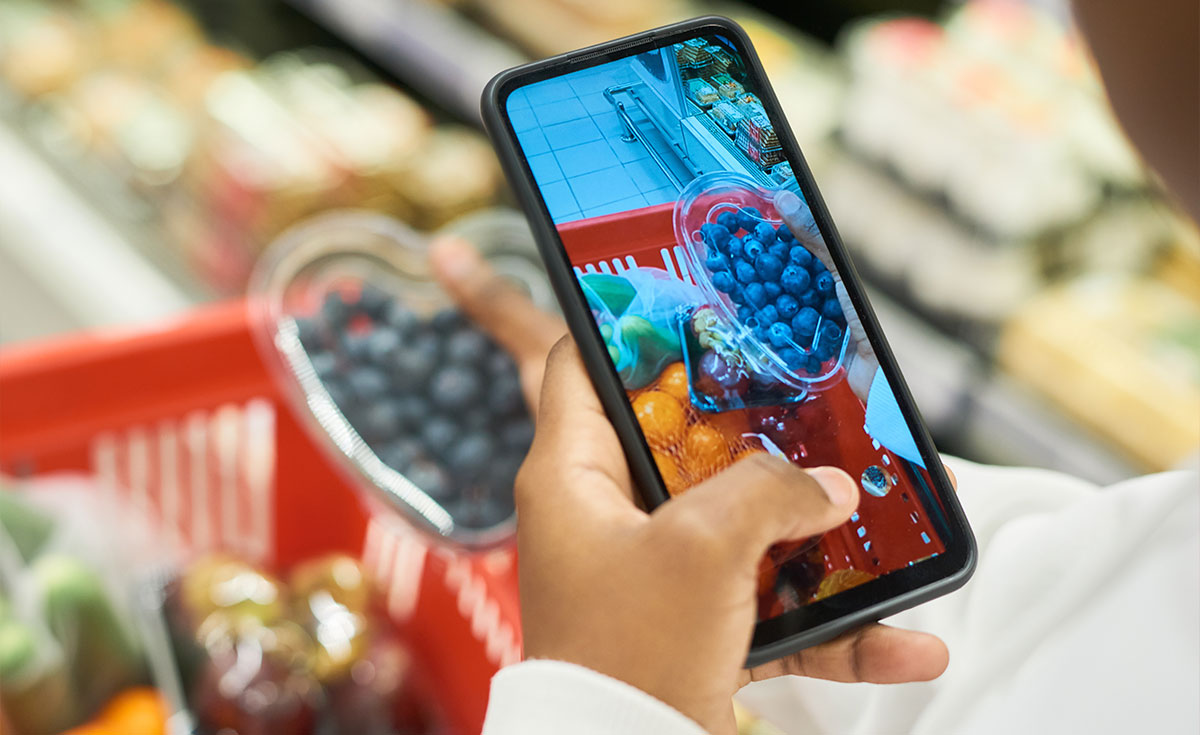By: Rick Stein, Vice President, Fresh Foods, FMI
 The farmer from down the street skillfully cultivating a lettuce patch, community field workers carefully inspecting the ripeness of strawberries and clean water from a local reservoir hydrating a nearby apple orchard – these are just some of the images conjured in the minds of grocery shoppers upon seeing the product claim, “locally grown.” Few other product claims can attest to having such a strong imaginative response, and it’s easy to see why. Shoppers view the “locally grown” distinction as more than a mere guarantee of freshness; rather, they see it as a convenient opportunity to contribute to the growth and prosperity of their community, state or nation. This powerful cognitive link can produce feelings of fulfillment and even pride upon purchase of locally grown produce.
The farmer from down the street skillfully cultivating a lettuce patch, community field workers carefully inspecting the ripeness of strawberries and clean water from a local reservoir hydrating a nearby apple orchard – these are just some of the images conjured in the minds of grocery shoppers upon seeing the product claim, “locally grown.” Few other product claims can attest to having such a strong imaginative response, and it’s easy to see why. Shoppers view the “locally grown” distinction as more than a mere guarantee of freshness; rather, they see it as a convenient opportunity to contribute to the growth and prosperity of their community, state or nation. This powerful cognitive link can produce feelings of fulfillment and even pride upon purchase of locally grown produce.
Therefore, it’s no surprise that “locally grown” is the most popular product claim in the produce aisle, with 56% of shoppers wanting to see more of it. When asked what attributes they would like to see their produce department carry more of, shoppers ranked “locally grown” as their top choice across generations: Gen Z (47%), Millennials (47%), Gen X (56%) and Baby Boomers (67%). Such enthusiasm from consumers warrants a closer look into what defines local produce and how that definition changes, depending on where you live.
Some retail banners have strict locally sourced definitions, posted across the store, indicating a specific mile radius, state lines or other. This highly influences the definition used by the shopper. Furthermore, shoppers located in large growing areas tend to respond differently from shoppers living in states with minimal local growing. Most consumers (30%) list state as their primary definition of “locally grown,” but beyond this data point, there is ample variation in consumer perception of the term. This flexibility enables food retailers to define “locally grown” as they see fit, so long as their definition is succinct and clearly communicated. However they are defined, “locally grown” programs are likely to have widespread buy-in across the population.
Consumer perception is also varied in regard to whether locally grown produce is or should be organic. According to FMI’s 2022 Power of Produce report, 45% believe local produce does not have to be organic, 27% are unsure, 19% believe all locally grown produce is organic and 9% answered that it depends on where they purchase it. As a result, food retailers are free to market their “locally grown” produce as either conventional or organic, further expanding the way these programs can be promoted.
To learn more about product attribution claims and how your produce department can effectively leverage them to boost product engagement, download the full 2022 Power of Produce report.


 Industry Topics address your specific area of expertise with resources, reports, events and more.
Industry Topics address your specific area of expertise with resources, reports, events and more.
 Our Research covers consumer behavior and retail operation benchmarks so you can make informed business decisions.
Our Research covers consumer behavior and retail operation benchmarks so you can make informed business decisions.
 Events and Education including online and in-person help you advance your food retail career.
Events and Education including online and in-person help you advance your food retail career.
 Food Safety training, resources and guidance that help you create a company food safety culture.
Food Safety training, resources and guidance that help you create a company food safety culture.
 Government Affairs work — federal and state — on the latest food industry policy, regulatory and legislative issues.
Government Affairs work — federal and state — on the latest food industry policy, regulatory and legislative issues.
 Get Involved. From industry awards to newsletters and committees, these resources help you take advantage of your membership.
Get Involved. From industry awards to newsletters and committees, these resources help you take advantage of your membership.
 Best practices, guidance documents, infographics, signage and more for the food industry on the COVID-19 pandemic.
Best practices, guidance documents, infographics, signage and more for the food industry on the COVID-19 pandemic.
